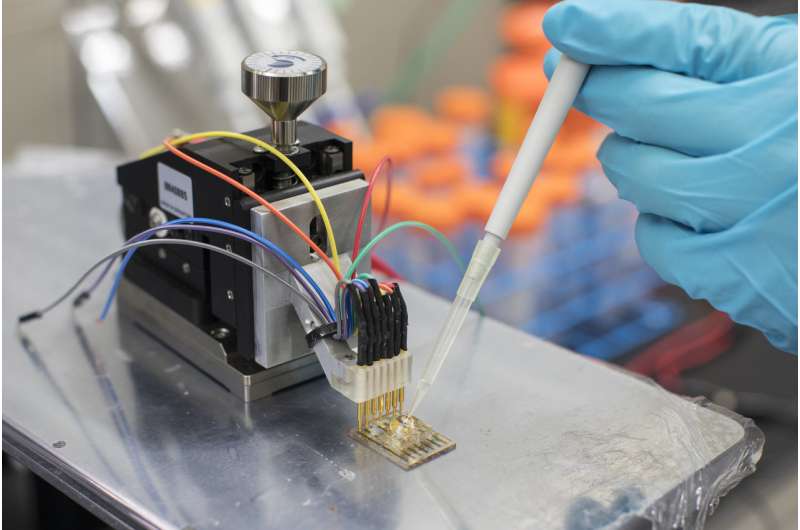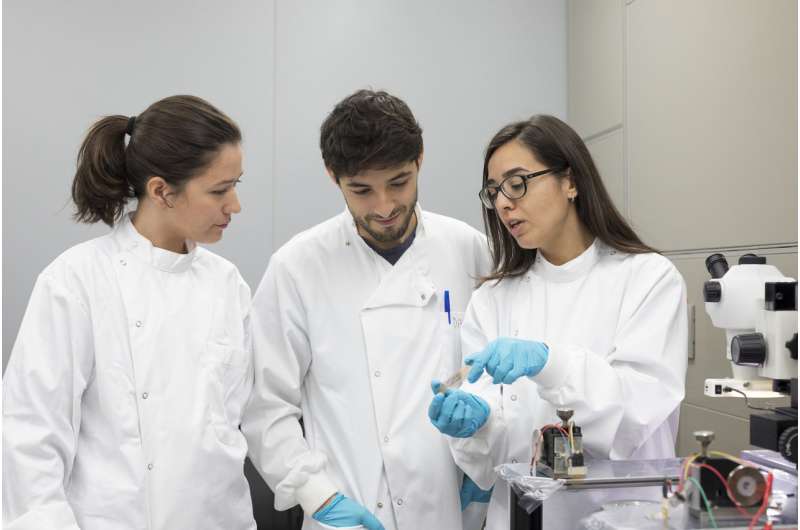Detecting metabolites at close range

A novel concept for a biosensor of the metabolite lactate combines an electron transporting polymer with lactate oxidase, which is the enzyme that specifically catalyzes the oxidation of lactate. Lactate is associated with critical medical conditions, so its detection is important for healthcare.
Biosensor performance hinges on electron transfer between the sensing electrode and enzyme. This increases when there is a decrease in the distance between enzyme active sites and the electrode surface. Redox enzymes have emerged as optimal components for biosensors because their ability to realize electron transfer complements their specificity in target binding and catalytic activity.
Typical efforts to achieve good electrical communication involve convoluted electrode modifications and additional mediators, which are redox active molecules that shuttle electrons between electrode and enzyme. Therefore, biosensors to date have been limited in terms of their target metabolites and environments. This has hampered their use for applications across diverse fields such as biotechnology, agriculture, and biomedicine. Instead, their main use has been restricted to in vitro electrochemical biosensors for glucose monitoring in diabetes patients.
To fill this gap, Sahika Inal from KAUST and collaborators from Imperial College London and the University of Cambridge, UK, have developed a biosensor that can be adapted in a micron-scale transistor configuration to detect any metabolite of interest.
At the heart of the proof-of-concept device, the researchers have conjugated lactate oxidase with a so-called organic electrochemical transistor polymer. This electron transporting polymer simultaneously acts as an efficient switch and a powerful signal amplifier: it can accept electrons from the enzymatic reaction and undergo multiple reduction reactions through several redox active sites.
This polymer also bears hydrophilic side chains that facilitate intramolecular interactions with lactate oxidase, which brings the enzyme close to the transducing material. This promotes electrical communication and, consequently, enhances the polymer sensitivity toward lactate. These polymer-enzyme interactions also avoid modifying the electrode surface and use of a mediator, "which simplifies device fabrication," explains Inal. She adds that, unlike previous biosensors, the device does not require a reference electrode, which provides design flexibility.

"Our biggest challenge was identifying the right material for this sensor," says Inal. After this first hurdle, her team encountered issues when interpreting the biosensor response. "This device surprised us with its high efficiency," she says.
Inal's team at KAUST is currently working on a design that will detect metabolites in different environments. "An obvious application for this system is a lab-on-a-chip lactate sensor," she adds. Such a sensor would be especially useful in wearable lactate monitoring devices. Moreover, this new system also opens new options for how enzymes can be exploited to generate and store energy.
The study is published in Science Advances.
More information: "Direct metabolite detection with an n-type accumulation mode organic electrochemical transistor" Science Advances, advances.sciencemag.org/content/4/6/eaat0911
Journal information: Science Advances



















